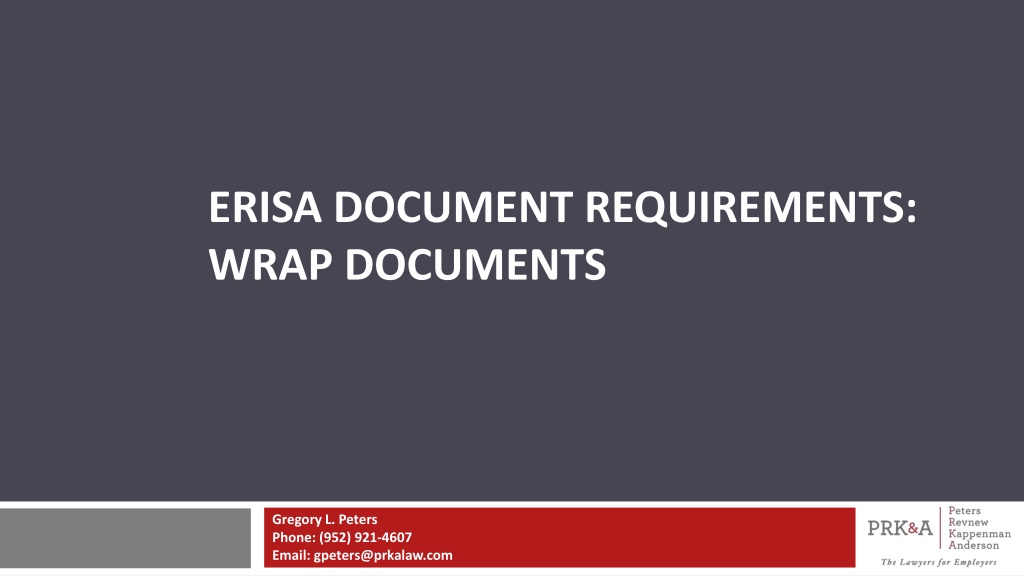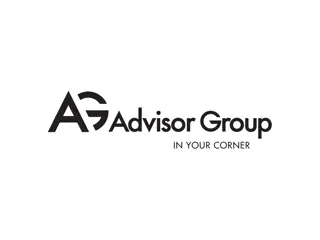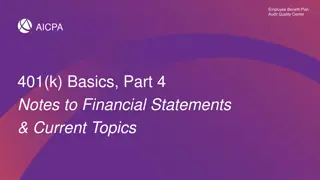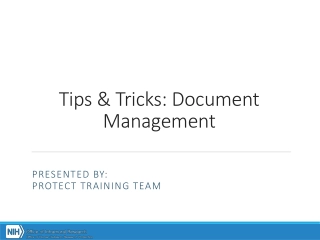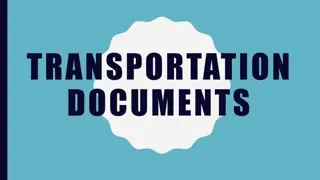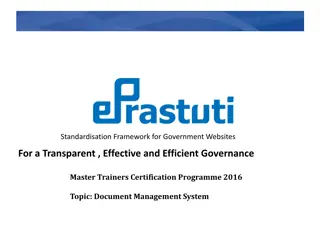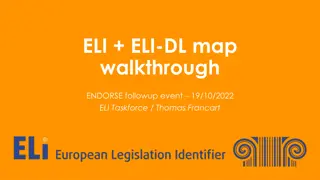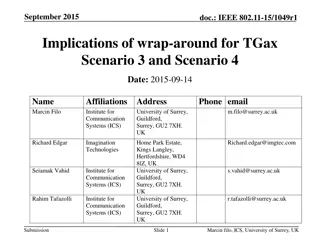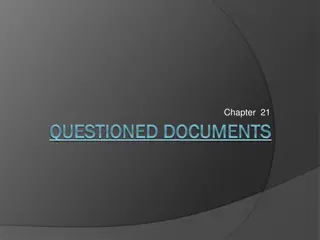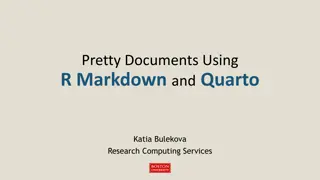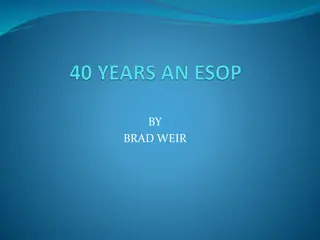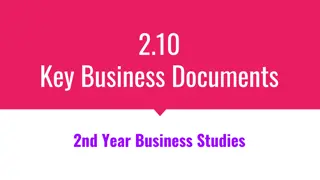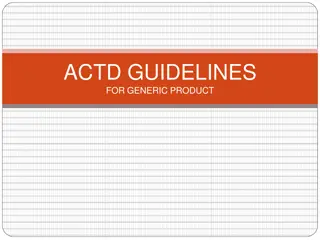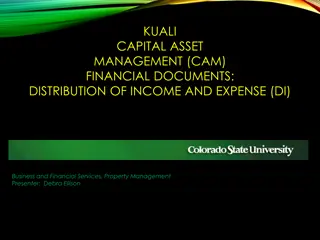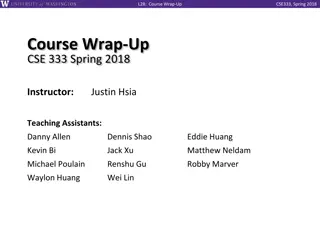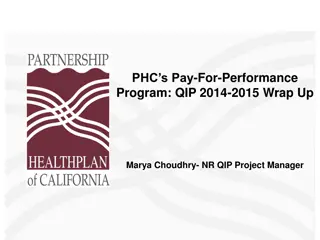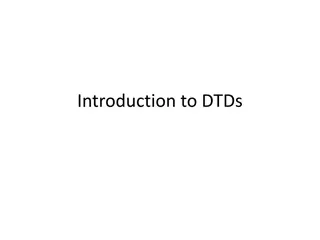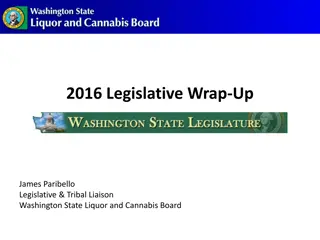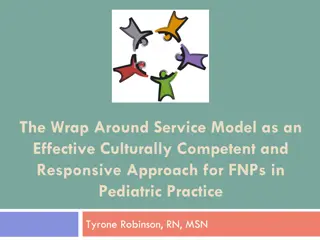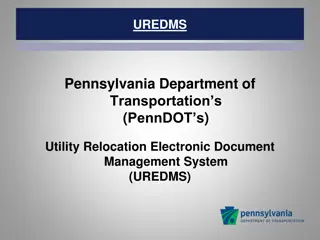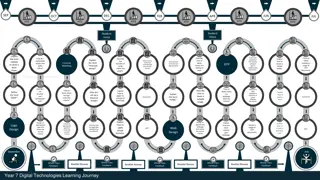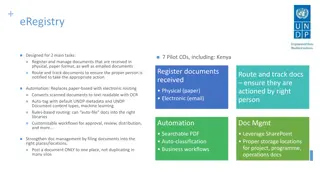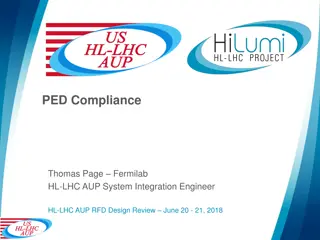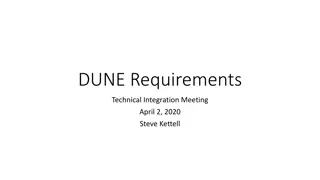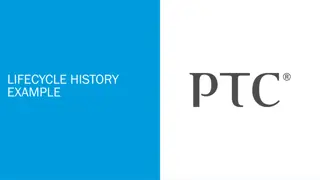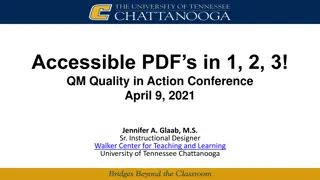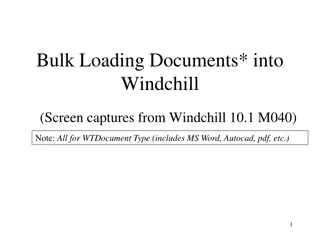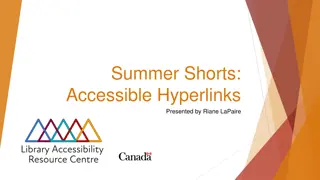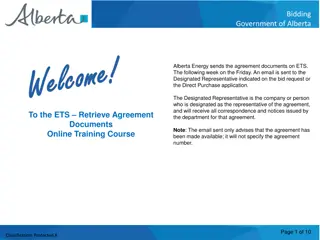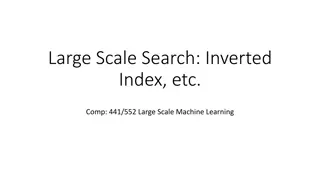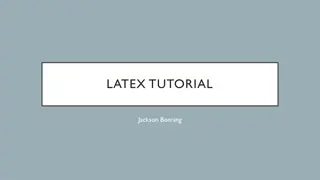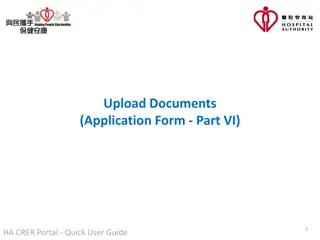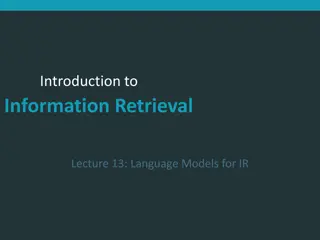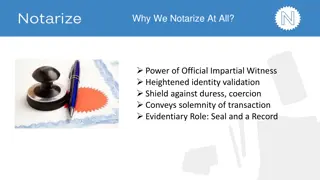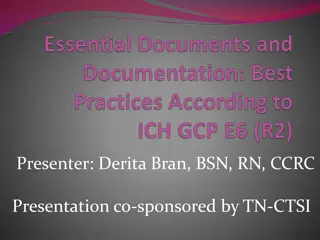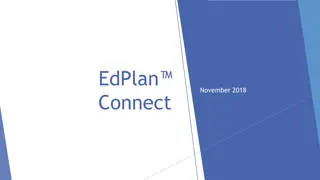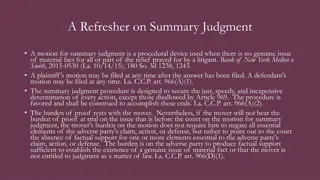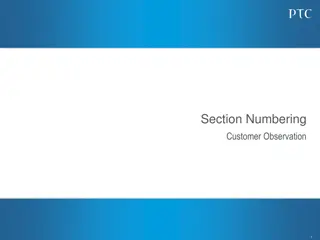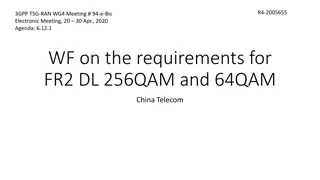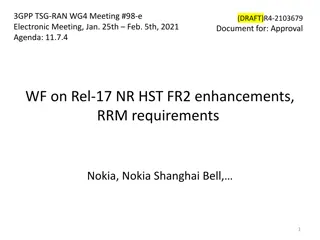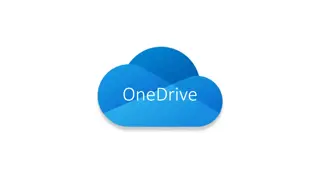Understanding ERISA Document Requirements and Wrap Documents
Employee Retirement Income Security Act (ERISA) sets minimum standards for employee benefit plans. This includes establishing, operating, amending, and terminating plans, with regulations set by the Department of Labor. ERISA applies if a plan exists, is employer-maintained, and covers specific benefits like medical care and disability. Employers are primarily responsible for ERISA compliance, and penalties can be imposed for non-compliance.
Download Presentation

Please find below an Image/Link to download the presentation.
The content on the website is provided AS IS for your information and personal use only. It may not be sold, licensed, or shared on other websites without obtaining consent from the author. Download presentation by click this link. If you encounter any issues during the download, it is possible that the publisher has removed the file from their server.
E N D
Presentation Transcript
ERISA DOCUMENT REQUIREMENTS: WRAP DOCUMENTS Gregory L. Peters Phone: (952) 921-4607 Email: gpeters@prkalaw.com
Agenda Introduction to ERISA Document Requirements PRKA Wrap Documents FAQs
Employee Retirement Income Security Act of 1974 (ERISA) ERISA sets minimum standards for how employee benefits are established, operated, amended, and terminated. Authorizes the Department of Labor ( DOL ) to issue regulations governing the administration of employee benefit plans. Specifies what information about a covered plan must be reported to the federal government and shared with employees.
When does ERISA apply? There are three (3) conditions that must be met for ERISA to apply: There must be a plan, fund or program to provide benefits. The plan, fund or program must be established or maintained by an employer or employee organization to cover at least one employee. The benefit provided must fall within the list of ERISA-covered benefits.
When does ERISA apply? ERISA-covered benefits include: Medical, surgical, or hospital care or benefits. Benefits in the event of sickness, accident, disability, death, or unemployment. Day care centers. Scholarship funds. Prepaid legal services. Examples of employee welfare benefits covered under ERISA include cafeteria plans, dental and vision benefits, dependent care, health flexible spending accounts (health FSAs), short- or long-term disability plans, and group life insurance plans.
Who is responsible for complying with ERISA? The plan administrator (not the insurance carrier). The plan administrator is identified in the plan documents. If the plan administrator is not identified in the plan documents, the plan sponsor, is the plan administrator. Generally, the employer is the plan sponsor. Therefore, generally the employer is the plan administrator and is responsible for ERISA compliance.
ERISA Penalties Up to $110 per day per failure to provide a required or requested document.
Summary Plan Descriptions (SPD) The plan administrator of an employee benefit plan subject to ERISA must provide plan participants and beneficiaries a summary plan description ( SPD ) that describes the plan. The SPD must be: Sufficiently comprehensive to inform all covered persons of their benefits, rights and obligations under the plan. Clearly written in language that the average participant can understand. An ERISA-covered plan can exist without a written document, but it is considered out of compliance with ERISA.
Summary Plan Descriptions (SPD) - Content ERISA requires the SPD to have specific information including, but not limited to: Plan Name, Employer name, address, TIN, Plan Number, Plan Year, The name and address of the designated agent for service of legal process, A description of the procedures governing qualified medical child support orders ( QMCSOs ) , Newborns' and Mothers' Health Protection Act of 1996 notice, Genetic Information Nondiscrimination Act of 2008 nondiscrimination provision, and Women's Health and Cancer Rights Act (WHCRA) disclosure.
Summary Plan Descriptions (SPD) - Distribution SPDs must be provided to participants and beneficiaries: In the case of a new plan, within 120 days of the date the plan becomes effective. For existing plans, within 90 days of the date when a participant first becomes covered by the plan. When information in the SPD changes (unless a Summary of Material Modification ( SMM ) is distributed). If the in the SPD has not changed, every ten years after the SPD is initially provided.
Summary Plan Descriptions (SPD) - Distribution SPDs may be distributed electronically if the delivery meets the DOL safe harbor rules. The first category of individuals who may receive electronic disclosure of plan information are employees: Who can access electronic documents at any location where they are expected to perform their employment duties; and For whom access to the employer's electronic information is an integral part of these duties. This analysis focuses on the employee's regular access to the employer's electronic information system rather than the actual location of the employee's workplace. The safe harbor extends beyond access from the employer's physical worksite to cover employees who, for example, work at home or who may be traveling, provided that they have ready access to the employer's information system Participants who fall under the access category do not have to affirmatively consent to electronic disclosures of plan information
Summary Plan Descriptions (SPD) - Distribution The second category of individuals who may receive electronic disclosure of plan information consists of participants, beneficiaries, or any other persons who affirmatively consent to receiving documents through electronic media and have not withdrawn that consent. An individual who agrees to receive electronic disclosure must: Affirmatively consent or confirm consent electronically, in a manner that reasonably demonstrates the individual's ability to access information in the electronic form that will be used to provide the information that is the subject of the consent. Provide the e-mail address to received the documents. On request, plan administrators must provide the participant, beneficiary, or other individual with a paper version of the electronically furnished documents.
Wrap Plans Plan Sponsors assume that written insurance policies or other booklets or summaries provided by the insurance company are sufficient to comply with ERISA. In reality, these documents often fall short of the ERISA requirement. Most common missing information includes: The name and address of the designated agent for service of legal process, and, A description of the procedures governing QMCSOs.
Wrap Plans A wrap plan document is a legal document that combines and incorporates ( wraps together ), by reference, all group insurance policies and contracts of a plan sponsor into a single plan. Applies ERISA-required language to all ERISA covered plans via one document. The wrap plan is a new plan. The board of directors will need to sign the board resolution to officially adopt the plan. Employers should attach a copy of the wrap document to the board resolution and save it like they would other important corporate documents. If applicable, only one 5500 will need to be filed for the wrap plan. The 5500 will include information for all benefit plans covered under the wrap plan.
PRKA Wrap Plans Flat rate of $500 for the plan document and board resolution. Updates to wrap documents are billed at our normal hourly rates, not to exceed the cost of a new plan document. This does not include: Advice on what plans to include in the wrap document. Advice on how to distribute the plan document. Advice on how to file 5500s for the wrap plan. Fill out information form and send to gpeters@prkalaw.com. For document updates: fill out the information form with the changes needed.
PRKA Wrap Plans - FAQs What is the plan number? The plan number is the three-digit identifying number, beginning with 501. The wrap plan needs a unique plan number. Consider using 510 if the employer is unsure about previous plan numbers. If the information form does not include a plan number, or if the plan number listed is 501, we will assign it plan number 510. The plan number is used for 5500 filing purposes, but must be included in the wrap document even if the plan does not need to file a 5500.
PRKA Wrap Plans - FAQs When does the document need to be updated? If anything on the information form changes. For example: Employer address, name, or contact person. Employer changes a line of coverage: Adding dental coverage or no longer offering vision.
PRKA Wrap Plans - FAQs What gets attached to the plan document? A benefit guide (or certificate of coverage, benefits explanation, SBC, or other document explaining the benefits offered and cost) needs to be attached to the wrap document for each line of coverage. The benefit guides are needed because the wrap document does not actually explain the benefits offered (like services, premium cost, networks, etc.). It explains the legal rights participants have under the plan and other notices required by law.
General Wrap Plan - FAQs How do wrap plans impact 5500s? A wrap plan creates a separate benefit plan that incorporates all the insured plans into one wrap plan. If an employer is close to 100 participants on one or more plans, the employer may not want to combine plans into a single plan because it may have to provide information on a 5500 for a plan that would otherwise not be subject to filing. A group can have multiple wrap plans.
General Wrap Plan - FAQs What is the wrap board resolution? The board resolution is a document that officially adopts the wrap plan on behalf of the employer. The group should check their articles of incorporation or by-laws to determine who is on the board of directors. Under Minnesota law, there needs to be at least one director.
General Wrap Plan - FAQs What about voluntary benefits? Under a DOL regulatory exemption, a voluntary benefit arrangement that satisfies the safe harbor's requirements is not an employee welfare benefit plan subject to ERISA. The DOL's safe harbor for voluntary benefits has been interpreted in numerous court cases and DOL advisory opinions. The courts have not always interpreted the safe harbor consistently, particularly regarding an aspect of the safe harbor concerning whether an employer's involvement with a program is sufficiently minimal to satisfy the safe harbor. The determination of whether a plan is subject to ERISA is a fact specific inquiry that an employer needs to discuss with their legal counsel.
General Wrap Plan - FAQs A voluntary benefit is generally not subject to ERISA if all of the following are met: No contributions are made by an employer. Participation in the plan is completely voluntary for employees or members. The employer receives no consideration, in the form of cash or otherwise, in relation to the voluntary plan. The sole functions of the employer, without endorsing the voluntary plan, are: permitting an insurer to publicize the plan to employees, for example, by providing an employee the business card for the plan's insurance agent; collecting premiums through payroll deductions or dues checkoffs; and remitting the premiums to the insurer.
General Wrap Plan - FAQs An employer endorses a voluntary plan (possibly making it subject to ERISA) if the employer: Leads employees to think that the plan is part of the employer's overall benefit offerings (for example, providing a brochure, handbook or enrollment forms to employees that characterize the plan as sponsored by the employer). Chooses or negotiates with the plan's insurers. Assists individuals with claims, maintaining claims forms or facilitating appeals. Is named as, or serves as, plan administrator and agent for service of legal process for the program. Makes suggestions to the insurer on plan design and structure.
QUESTIONS? Gregory L. Peters 952-921-4607 gpeters@prkalaw.com
